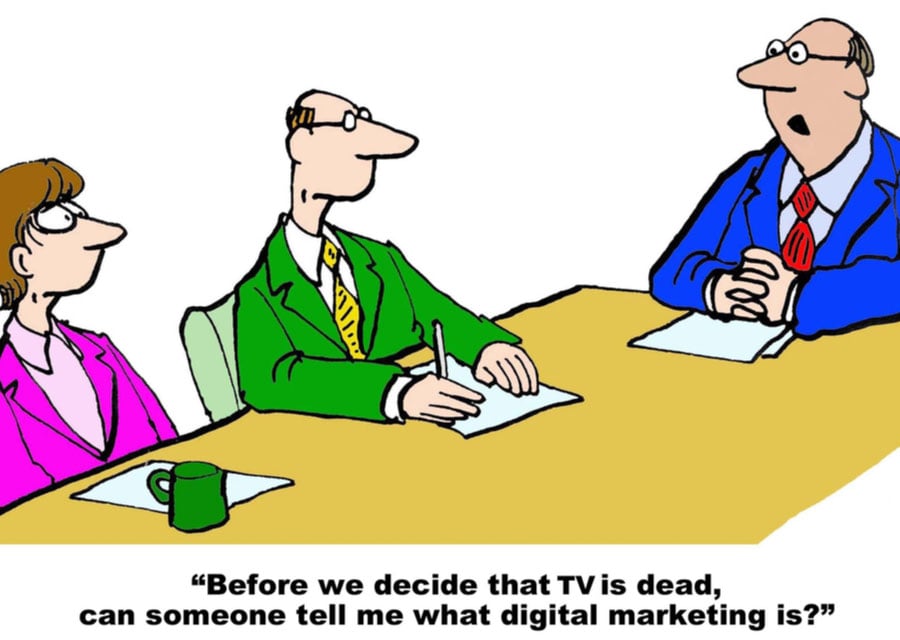How to Build a Digital Marketing Strategy for 2022
According to HubSpot, a digital marketing strategy is:
“A plan for reaching a specific marketing-related goal (or goals) in a focused and achievable way. It takes into consideration what your business is currently doing well and what you're missing in regards to the objective you set, so you're more likely to accomplish it.”
But what does this mean for your brand? Why is a digital marketing strategy so important in 2022?
As much as one would like for them to be, your brand’s marketing resources aren’t unlimited. Paid advertising, whether it’s online or not, takes resources, which can be in short supply. A digital marketing strategy is the best way to ensure your existing resources have the most potency; that they are best used to help you achieve your goals.
A marketing strategy helps you understand the challenge in front of you, come up with a guiding plan for how to meet your challenge, then paves the way for specific actions to accomplish your goal, overcome your challenge, and grow your business.
Looking into 2022, how can you build a digital marketing campaign that will best serve your goals in a modern climate?
Step 1: Build a Digital Marketing Plan
The first step in your digital marketing strategy is to determine what you want to accomplish, and how you plan to get there. Your digital marketing plan should outline several points including:
- Your entire budget for the year
- The initiatives you plan to take on
- The digital marketing channels you plan to use
- How it all ties into your business summary to meet your brand’s goals
You can think of your digital marketing plan as the steps you take to achieve your marketing goals; a roadmap for your marketing year.
Step 2: Create Your Buyer Personas
The next step in your digital marketing campaign is to pinpoint exactly who you are selling to. This will help you figure out how to best connect with potential customers and clients, making the most impact.
This means building buyer personas. But what is a buyer persona? This is a “semi-fictional representation” of who you believe your ideal customer to be; your target audience. But this isn’t based on a hunch or a gut feeling; it’s based on market research and data about your customers, including their:
- Demographics
- Behavior patterns
- Motivations and goals
Even for business-to-business (B2B) brands, buyer personas matter. After all, it’s not a business on the other end of the computer, it’s a person seeking solutions for their company. And buyer personas are most effective when they are detailed. But why do buyer personas matter in 2022?
For some time, buyer personas seemed to be becoming a thing of the past when it came to digital marketing. Social media brands like Facebook could get away with fairly nondescript customer personas thanks to the massive quantities of data Facebook has for its users, making it simple to target audiences with incredible precision without buyer personas. Brands didn’t have to do as much work building buyer personas because Facebook and other social media platforms could find—and advertise to—these people for you.
But new privacy policies on smartphones restrict just how much platforms like Facebook can track their users. Moving into 2022, buyer personas will again be a very necessary piece of the digital marketing strategy puzzle to identify your ideal business customers, even in a business-to-business environment.
Step 3: Define Your Goals
Your marketing strategy should all be in service of meeting your larger business goals, which means you must define your goals. Are you hoping to get 200 people to sign up for an online webinar? Generate meaningful, quality leads? Build awareness of your brand?
No matter what your marketing strategy goals are, detailing them is an important step. After all, your digital marketing strategy should all be in service of meeting these goals; everything you do will be geared towards achieving these goals.
Step 4: Choose the Right Tools to Measure Your Progress
It’s hard to know whether your digital marketing efforts are paying off if you are not tracking your progress, which means you need the right digital marketing tools to track your work.
Analytics tools like Google Analytics or social media schedules can help you discern what is most effective for your audience so you can continuously hone and refine your marketing strategy for the best possible user experience. Also, HubSpot’s Marketing Hub, which serves as a complete marketing tool to help convert visitors to customers and track your overall return on investment, all through your customer relationship management (CRM) tool, HubSpot.
Step 5: Look at Your Existing Media
Before you build out your stock of paid ads, inbound marketing blog posts, webinars, and more, take a look at what you already have that can serve your digital marketing strategy. HubSpot recommends breaking down your assets into three separate categories:
- Paid Media, which refers to any digital channels that require you to spend money, including social media, search engine ads, digital paid ads, pay-per-click ads, and website ads.
- Owned Media, which refers to anything your team has to create, like pictures, podcasts, infographics, or any other piece of content you have to build.
- Earned Media, which can also be called user-generated content, such as shared posts on social media generated by other businesses and customers mentioning your brand.
Once you take a look at your paid, owned, and earned media, you can have a better idea of how you can use your pre-existing media to serve your digital media strategy. If you are already publishing weekly content in the form of owned media, you can promote this content on social media in the form of paid media, which your customers and leads may then share, providing you with earned media for a holistic marketing approach.
Earned media is becoming a more and more important form of digital marketing, which can cut through the noise of the digital marketing landscape. Search Engine Journal posits that going into 2022, YouTube will become an important player in the earned media category, and other platforms like Facebook and Instagram will put more and more emphasis on video content as well.
Step 6: Review and Plan Your Campaigns
What content is going to be the most effective for you; which will help you the most in your digital marketing campaign? Do you need to update your CTAs at the end of a blog post to better gear them towards your new marketing goals? Do you need to create video content that better connects to your buyer personas?
Once you have taken an in-depth look at what you already have, you can build a content creation plan, which should have:
- Topic clusters
- Goals
- Formats
- Digital channels
Each of these should connect with the challenges you are solving for your buyer personas.
What digital marketing content trends can you expect to see grow in popularity in 2022?
- Facebook and Meta marketing
- Influencer marketing
- LinkedIn marketing
- Experience-based content
Step 7: Set Your Plan in Motion
Now it’s time to bring your research and planning together and assemble your final strategy; a long-term plan with a structured timeline for all of your marketing efforts. The beginning of the year is the ideal time to look at how you want your marketing goals to best serve your operations throughout the entire year.
If you are planning to launch a new product or service in April, your digital marketing strategy should be centered around this timeline, with digital content and paid media geared towards your buyer personas.
And truly, your digital marketing strategy should be as unique as your business. Your goals, plans, channels, and content should not only be geared to your buyer personas, but should be an accurate representation of what makes your brand special, and share the story of how you help other businesses solve their most challenging problems.
Digital Marketing Trends to Consider in 2022
While you may begin your digital marketing strategizing each year, there will be inherent differences from year to year in the way that consumers and brands interact with digital media. In 2022, this means adjusting your marketing efforts to best align with the trends of today’s consumers and businesses. What does this mean?
Here are a few digital marketing strategies that have promise in 2022:
- Video marketing, which appeals to more than 85 percent of consumers who want to see more video content from brands, as well as the rise of TikTok and Instagram videos.
- Using storytelling to build a brand image, as well as to drive organic traffic growth.
- Optimizing content marketing for the growing population of users who are using voice search at an increased rate.
- Using geofencing to hone your local search engine optimization (SEO) strategy through text, email marketing, social media, and in-app notifications.
- Build trust in B2B digital marketing by establishing yourself as an authority; that’s how your target audience will gain interest in your brand and connect with your team. Educational blogs, white papers, quizzes, and long-form content are all great ways to build trust.
Exceptional Customer Service: Conversational Digital Marketing
Long gone is the era of people waiting days or even hours for a response from a brand. As it stands, 82 percent of consumers are now accustomed to an immediate response to their questions—in fact, they expect it. Even in the middle of the night, those that reach out expect some kind of information or they’ll turn to your competitor.
Looking ahead to 2022, conversational marketing not only removes the guesswork, but it helps businesses who could become lifelong customers better know your brand.
What does conversational marketing include? It certainly includes customer service chatbots and other live chat software, but it can also include things like personalized email marketing and custom email campaigns, and conversational videos to deliver answers and share your message with your target audience.
What’s more, improved communication with your audience allows you to shorten the overall sales cycle, better your marketing funnel, and use your marketing resources wisely. Conversational digital marketing is a trend that one can only expect to see grow in 2022.
Get Support From the Pros
If there’s one thing that 2021 taught us that is sure to be true in 2022 is that changes in the digital space can happen in the blink of an eye. The landscape of digital marketing will continue to change and evolve.
At ThinkFuel, we always have our finger on the pulse of what’s happening in digital marketing, social media marketing, content marketing, and more. As a B2B digital marketing service, we’ll help you create content to make meaningful connections and grow your brand. To learn more, connect with our team today.
Table of contents
Share this
You May Also Like
These Related Stories

A B2B Guide on How to Grow Your Business Through Digital Marketing

How to Build Inbound Links to Your Website: 8 Tips for Inbound Link Building
